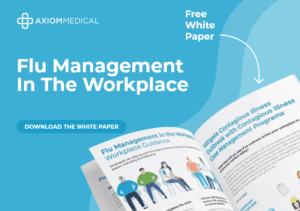Integrating safety and operations is how smart companies avoid costly workplace problems. When safety operations integration works right, everyone knows what to do when injuries happen. This workplace safety integration approach saves money and keeps workers happy.
Why Integrating Safety and Operations Matters
Many companies treat safety like it’s separate from regular work. Safety meetings happen in one room. Work planning happens in another room. When something goes wrong, nobody knows what to do.
Integrating safety and operations works much better. Smart companies build safety right into daily work. When workplace injuries happen, everyone already knows the next steps. This safety operations integration stops costly delays and confusion.
The Real Cost of Not Integrating Safety and Operations
When safety and work planning don’t talk to each other, problems pile up fast:
- Work stops when people get hurt because nobody knows what to do next. Managers waste time looking for answers instead of following simple steps.
- Workers don’t report small injuries because they’re scared or confused about what happens next. Small problems become big workplace injuries later.
- Hospital visits and workers compensation claims cost way too much money. Without integrating safety and operations properly, every accident gets expensive.
- Good workers quit when they don’t feel safe at work. Poor safety operations integration makes good people leave for better jobs.
What Integrating Safety and Operations Looks Like
Companies with smart safety operations integration do these things right:
Simple Plans for Workplace Injuries
When workplace injuries happen, the response is fast and easy. Workers know exactly who to call. Managers have simple lists of what to do. Work keeps going while hurt workers get help through good plans.
Fast Safety Communication
Managers get updates about workplace injuries without making lots of phone calls. Return-to-work plans are easy to see and follow for everyone in the safety operations integration process.
Safety Training That Actually Works
Safety training happens during real work—not in boring classroom meetings. Teams learn to spot workplace safety problems early and stop injuries before they happen.
Everyone Knows Their Job
Everyone knows what to do when integrating safety and operations. Managers handle accidents right away. HR teams take care of paperwork. Doctors make medical choices without other people getting in the way.
How Workers Win with Safety Operations Integration
When integrating safety and operations becomes part of daily work, workers see the difference right away:
- Workers trust the system because they’ve seen it help their friends at work quickly and well.
- Workplace injury problems get reported early and handled quietly, without fear of getting in trouble.
- Getting better from workplace injuries happens faster because help starts right away through good safety operations integration.
- Workers feel important, not like a problem when the company really cares about integrating safety and operations.
How to Start Integrating Safety and Operations
You don’t need to change everything at once. Focus on three main things for good safety operations integration:
One Place to Report All Injuries
Use one phone number or computer tool for reporting all workplace injuries. Teach everyone to use it the same way. Make sure the right people know about problems right away. This single contact point makes your response much faster.
Connect Your Safety and Work Systems
Link safety, HR, and work tools so information moves easily. Managers should be able to check workplace injury status just like they check work schedules. This connection is key for successful safety operations integration.
Measure Your Safety Results
Track important numbers: how fast you respond to injuries, how quickly people return to work, and what workers think about the process. Use real numbers to make your integrating safety and operations approach better.
How Technology Helps Integrating Safety and Operations
New computer systems make the whole safety operations integration process easier:
- Real-time updates for HR, managers, and safety teams about workplace injuries
- Clear return-to-work plans that everyone can see and change
- Easy communication between all people in the process
- Phone apps for field workers who need tools while working
The best systems work the way people actually work—simple, fast, and easy to use every day.
Why Integrating Safety and Operations Matters More Now
Today’s workers expect more from their jobs. Safety operations integration matters—not just for following rules, but for keeping good workers and having a good company reputation.
And the cost of getting it wrong keeps going up:
- Hospital care costs more money every year
- Workers compensation insurance costs more when you have bad safety records
- Lost work time costs a lot when important people can’t work due to workplace injuries
- Good workers choose companies with better safety operations integration
How to Make Integrating Safety and Operations Work
The biggest mistake companies make? Trying to start safety operations integration everywhere at the same time.
- Start with one location or team to test your improvements before using them everywhere.
- Get managers excited early because they make or break integrating safety and operations with what they do every day.
- Share good results from your safety operations integration test to build excitement across the company.
- Keep making the process better as it grows and changes with your company’s needs.
Why Safety Operations Integration Is Good for Business
Companies that focus on integrating safety and operations see real benefits:
- Fewer workplace injuries because of better prevention and faster response
- Workers who feel better about their jobs and trust company leaders
- More predictable costs and workers compensation expenses
- Stronger trust across teams when everyone knows their role in safety operations integration
Taking Action on Integrating Safety and Operations
The question isn’t if your company should start safety operations integration—it’s when you’ll start seeing these benefits.
The most successful companies are already building systems where people know what to do, get help fast, and feel supported through the whole process.
Ready to improve your injury management strategy?
Watch our webinar Sync or Sink – Why Safety Must Align with Ops to Avoid Costly Mistakes with Dr. Scott Cherry and Major Account Strategy Leader, Lhoren Morris.
We’ll break down real-world examples, common missteps, and how to bring teams together around a unified process.










